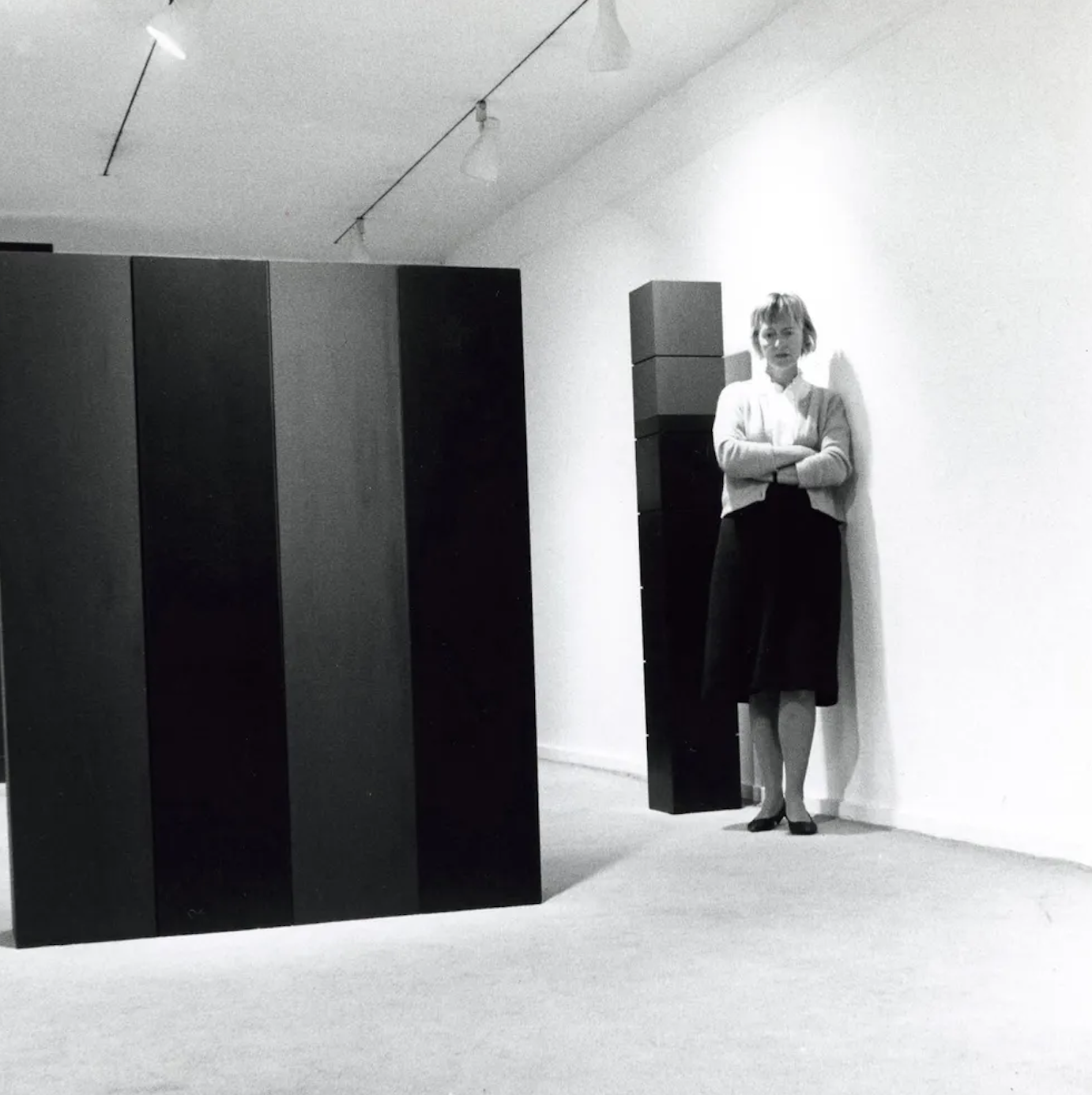ANNE TRUITT
Anne Truitt (1921-2004) made significant contributions to American art over her forty-year career. Her innovative use of geometry and color marked a transformative moment in modern sculpture. For Truitt, abstraction was a way to express her perceptions of people, places, ideas, and events, using color and form as metaphors to develop a unique visual language. Born in Baltimore, Maryland, Truitt spent her formative years in Easton, Maryland and graduated with a BA in Psychology from Bryn Mawr College. During World War II, Truitt served as a Red Cross nurse’s aide at Massachusetts General Hospital, balancing night shifts on the wards with daytime work as a research assistant in the psychiatric lab. During this period, she also wrote poems and short stories, contributing to the Bryn Mawr College’s archive. Truitt began studying sculpture in her late-twenties at the Institute of Contemporary Art in Washington, DC, and later at the Dallas Museum of Fine Art. By 1961, she developed her signature style. Truitt’s first museum retrospective, organized by the notable curator Walter Hopps, took place at the Whitney Museum of American Art in 1973, and The Hirshhorn Museum in Washington featured her first posthumous retrospective in 2009.
Her works housed in major museums such as the National Gallery of Art, the Art Institute of Chicago, and the Metropolitan Museum of Art, among others. Internationally, her works are part of collections like the Panza Collection in Italy. A significant acquisition of her work by the Dia Art Foundation was displayed at Dia Beacon through 2021, and a major survey exhibition is planned for 2026 at the Museo Reina Sofía in Madrid.

